Table Tennis and Air Hockey
Table tennis and air hockey are two classic table-top games that have those who play them worldwide enthralled. These games, which are renowned for their simplicity of use, high activity level, and entertaining gameplay, have over the years established themselves in homes, recreational centers, and in professional arenas.
Although they bear a likeness to the configuration and the spirit of competition, each one gives an entirely different sort of experience to various skills and likes. This piece delves into the history, rules, equipment, strategies, and principal variances between the two games, thus offering veterans and newcomers a complete manual.
Table Tennis: A Permanent Classic
History
Table tennis, commonly understood to as “ping pong,” has a long athletic history that stretches back to 19th-century classical England. Table tennis in its early form was conceived as a parlor game, which looked at indoor tennis and attempted to bring the same level of vibes and excitement as on tour. The first editions of this sport consisted of using corks as balls, cigar boxes as paddles, and books arranged in a row as nets.
Table of Contents
ToggleThrough the early 20th century, the uniformity of equipment and regulation of rules were processes that paved the way for table tennis, a sport that eventually gained global inclusion, as a reality, later becoming a recognized Olympic sport in 1988. In like manner, it symbolizes precision, agility, and strategy today.
Rules
Standard table tennis is played either in singles or doubles. In this game, a player should strike the ball using their paddle, hit over the net in the opponent’s court and score points either by making a competition error or are unsuccessful in returning their ball in play.
- Scoring: Match wins are best of five games, with a game won by the first player to 11 points unless both players have 10. All competitions are played in the best of seven matches format.
- Serving: Players alternate serves every two points, with the serve switching after each game. The ball must be tossed at least six inches upward before being struck.
Equipment
- Table: A rectangular, smooth-surfaced table, usually dark green or blue, with a white border.
- Net: A taut, low net dividing the table into two equal halves.
- Ball: A lightweight, hollow ball made of celluloid or plastic, measuring 40 mm in diameter.
- Paddle: A wooden paddle covered with rubber, designed for grip and spin control.
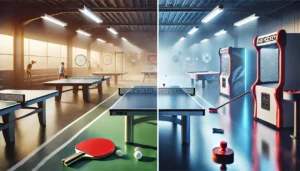
Strategies
- Spin Control: Mastering spin is crucial for dictating ball movement and making it harder for opponents to predict shots.
- Placement Precision: Strategic shot placement forces opponents out of position and creates opportunities for attacking shots.
- Varying Pace: Mixing up the speed of shots keeps the opposite team guessing and disrupts their patterns.
- Strong Serve: An ideal serve can rapidly put pressure on the opponent, setting the tone for the point.
Air Hockey: A Fast-Paced Thrill
History
Originating as an arcade game in the 1960s and 70s, air hockey as an arcade game based on a pastime with an element of competition. Diagram of the air-cushion table and low-friction puck design continued the streak of amazing innovation that led to the major popularity of air hockey in arcades and amusement centers.
Near the 20th century’s conclusion, air hockey tables have grown to be the main attractions in homes and recreation areas, thus becoming the favorite of players of all ages. It has transparent instructions and frightening play that attract both the relaxed and the very competitive players, thus making it a very popular game.
Rules
Air hockey is a two-player sport, mostly played to score points by sending a puck into an opponent’s goal.
- Gameplay: Players use clubs to hit the puck, which glides on a cushion of air made by tiny holes in the table’s surface.
- Scoring: A player earns a point each time the puck crosses their opponent’s goal. The game can be timed, or played to a preset score (commonly 7 or 10 points).
- Fair Play: Players must keep their mallets on their side of the table and avoid trapping the puck.
Equipment
- Table: A smooth, air-powered table that reduces friction for fast puck movement.
- Puck: A lightweight, plastic disc designed to glide effortlessly across the table.
- Mallets: Round paddles used to strike and defend against the puck.
Strategies
- Speed and Reflexes: Quick hand movements and sharp reflexes are essential for staying ahead in this high-speed game.
- Accurate Aiming: Precision in directing the puck increases scoring opportunities while maintaining control.
- Defensive Positioning: Keeping the mallet near the goal allows players to block shots effectively and counterattack.
- Powerful Strikes: Strong hits can overwhelm opponents or force them into making errors.
Comparing Table Tennis and Air Hockey
Although both games are played on specialized tables, their gameplay dynamics and required skills differ significantly.
Skill Requirements
- Table Tennis: Requires technical skill, strategic thinking, and mastery of spin and shot placement.
- Air Hockey: Focuses on speed, reaction time, and physical dexterity.
Physical Demand
- Table Tennis: Demands agility, endurance, and a high level of hand-eye coordination. Players must move quickly and sustain energy over extended matches.
- Air Hockey: While less physically taxing, air hockey requires rapid arm movements and reflexes to keep up with the game’s pace.
Strategic Depth
- Table Tennis: Involves a blend of offensive and defensive strategies, requiring players to adapt to their opponent’s style and exploit weaknesses.
- Air Hockey: Emphasizes fast decision-making, with a primary focus on offense and defense in real-time.
Popularity and Appeal
I mean, table tennis and air hockey are entirely different games so they cater to different groups of people. Table tennis evolved into a very attractive international sport, and those who participate in professional league or tournament matches attract most spectators.
It is the game through which individuals can show their ability to be accurate as well as skillful participants. However, air hockey outshines outdoors and family game rooms as both a mild and a wild source of fun and excitement, without the need of getting down for cumbersome practice.
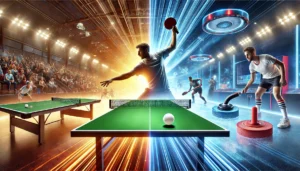
Benefits of Playing
Both games offer physical, mental, and social benefits.
Table Tennis:
- Enhances coordination and reflexes.
- Provides a cardiovascular workout.
- Boosts mental acuity through strategy and quick thinking.
Air Hockey:
- Improves hand-eye coordination.
- Encourages social interaction and friendly competition.
- Offers a stress-relieving, fast-paced activity.
Choosing Your Game
Both games whether you are pulled by the layers of tactics of table tennis or the action-packed air hockey, are exhilarating. If someone is looking for a sports competition that requires accuracy and technique, table tennis would be a great option. On the other hand, air hockey suits individuals who are the adrenaline junkies of instantaneous actions and wins like speed and power.
Conclusion
To experience the diversity and versatility of standing-top games, table tennis and air hockey unleash them fully. The games range from the slow-paced rallies of table tennis to the explosive goals of air hockey and thus become a source for people to come together and have fun, compete, and learn through playing.
Meeting the requirements of the scoped rules, techniques, and equipment accordingly renders you to this reality aside from shaping you for your competitive future in both games. The fact is, regardless of what type of sport you choose, the joy and challenging factor that table-top sports bring is something everyone in the world waits for!
FAQs
1. What is the main gap between table games and air hockey?
Table tennis celebrates strategy and skill, while air hockey puts focus on speed and reflexes.
2. Is table tennis more physically demanding than air hockey?
Yes, table tennis calls for agility and power, while air hockey involves quick hand movements but is less taxing.
3. Can both games be played casually and competitively?
Absolutely! Table tennis has professional leagues, and air hockey is a favorite in arcades and casual settings.
4. What equipment is essential for table tennis?
A table, net, lightweight ball, and paddles.
5. What skills are critical for air hockey?
Quick reflexes, precise aim, and defensive positioning are vital for success.
Table Tennis and Air Hockey
| Feature | Table Tennis | Air Hockey |
|---|---|---|
| Skill Focus | Precision, spin, and strategy | Speed, reflexes, and power |
| Physical Demand | High (agility, endurance) | Moderate (quick hand movements) |
| Gameplay Pace | Balanced and strategic | Fast and intense |
| Equipment Needed | Table, net, ball, paddle | Air table, puck, mallets |
| Scoring | 11 points per game | Goals within a set time or score |
| Best For | Skill development and competition | Instant fun and excitement |
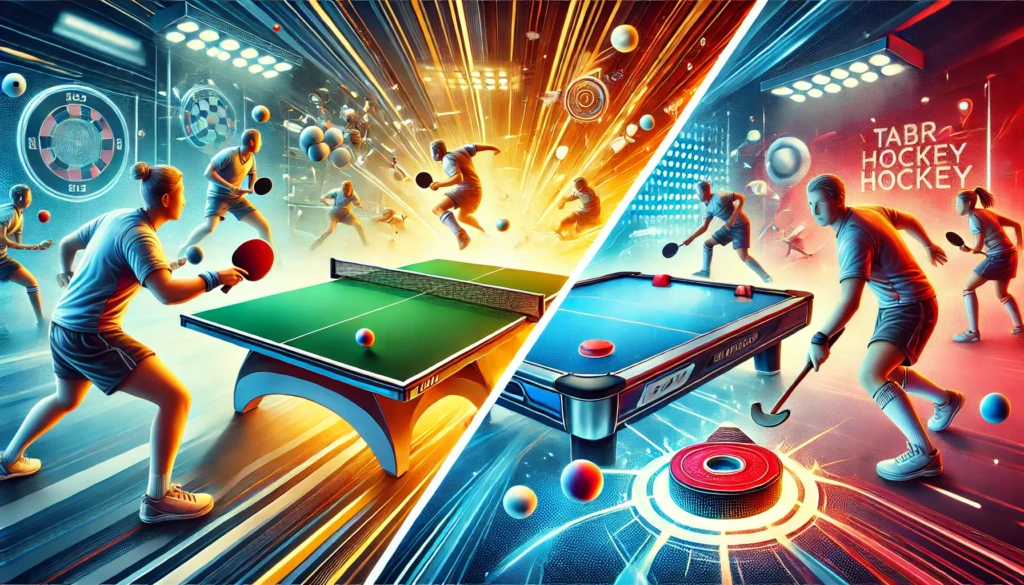


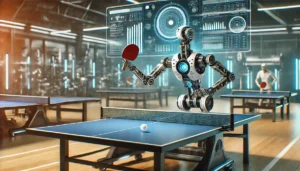
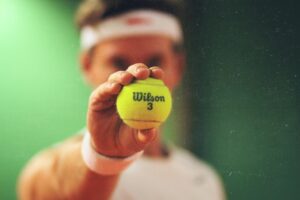
3 thoughts on “A Comprehensive Look at Table Tennis and Air Hockey”